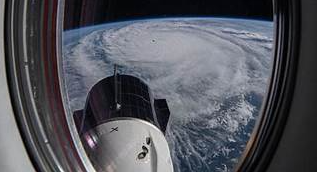Record hot water in the Gulf of Mexico aided Milton’s intensification, and a process known as eyewall replacement led it to grow in size.
Hurricane Milton intensified rapidly, quickly becoming one of the fastest-strengthening storms in recorded history. Its winds exceeded 175 mph, a feat rarely seen in October hurricanes. Experts believe that this extreme intensification was driven by a combination of environmental factors, notably the high sea surface temperatures in the Gulf of Mexico.
Warm water serves as the fuel for hurricanes, and the Gulf of Mexico’s unusually hot waters provided more than enough energy to help Milton grow. As the storm moved across the region, it absorbed this heat, allowing it to strengthen at an alarming rate. This intense warming of the ocean surface was one of the key contributors to Milton’s explosive growth.
In addition to the hot water, the storm underwent a process known as eyewall replacement. This is when a new, stronger eyewall forms around the storm’s center, replacing the old one. This replacement increases the storm’s size and often results in a more powerful hurricane. As the eyewall process unfolded, Milton expanded significantly, further increasing its destructive potential.
Eyewall replacement can sometimes temporarily weaken a hurricane, but in Milton’s case, the process led to an even stronger storm. The combination of warm waters and eyewall replacement resulted in an intensifying storm that was already on track to become a major hurricane. As it continued to gather strength, it grew in size, posing a much larger threat to the areas in its path.
The rapid intensification of Milton has raised concerns among meteorologists, who are studying the storm’s behavior to understand how future hurricanes might evolve under similar conditions. While the storm’s size and strength were remarkable, the record-breaking temperatures in the Gulf could become more common due to climate change, leading to more powerful hurricanes.
As Hurricane Milton moved through the Gulf, it brought devastating winds, heavy rainfall, and a massive storm surge. The storm’s size made it harder to predict its exact impact, and it continues to serve as a reminder of the dangers of rapid intensification in a warming world. For the regions in Milton’s path, preparedness and timely evacuations were crucial to mitigating the storm’s deadly potential.
Hurricane Milton’s story is an example of how interconnected environmental factors can amplify the power of a storm. As scientists continue to study the dynamics behind Milton’s formation and growth, their findings could be key in improving forecasting models and disaster preparedness in the future.

